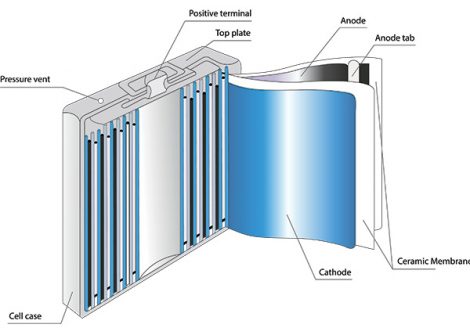Structure and Design
- Cell Configuration:
- Structure: Similar to lithium-ion cells, with the electrodes and separator wound into a cylindrical shape (in cylindrical cells) or stacked in a layered configuration (in pouch or prismatic cells).
- Encapsulation: Encased in a durable housing that protects the internal components and provides structural integrity.
- Battery Management System (BMS):
- Components: Sensors, microcontrollers, and circuitry.
- Function: Monitors and manages cell voltage, current, temperature, and state of charge (SOC). Ensures safe operation, prevents overcharging and deep discharging, and balances the cells to maximize lifespan and performance.
Working Principle
- Charging: During charging, lithium ions move from the cathode through the electrolyte and separator to the anode, where they are stored. Electrons flow through the external circuit from the positive to the negative terminal.
- Discharging: During discharging, lithium ions move back from the anode to the cathode, releasing energy. Electrons flow through the external circuit from the negative to the positive terminal, providing electric power to connected devices.
Advantages
- Enhanced Performance: Combines the high energy density and cycle life of lithium-ion batteries with the safety and robustness of lead-based systems.
- Improved Safety: Modified lead components can act as a buffer for overcharge and deep discharge conditions, enhancing overall battery safety.
- Versatility: Suitable for a wide range of applications, from automotive and renewable energy storage to telecommunications and backup power systems.
In conclusion, the internal structure of lead-to-lithium batteries is a sophisticated integration of lead and lithium-ion technologies, designed to capitalize on the strengths of both. This hybrid approach results in a battery that is not only high-performing but also reliable and safe for various applications.


